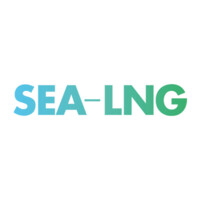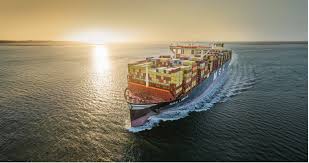The LNG industry coalition, SEA-LNG, headquartered in London, has revealed projections that the number of vessels powered by LNG fuel will reach a total of 1,154 by the end of 2028. Back in 2010, only 21 LNG-fueled ships were in operation, most of which were small vessels operating regionally. Today, there are 590 LNG-fueled vessels in service worldwide, including container ships that are twice the size of those in operation in 2010. In addition, 564 new LNG-fueled ships have been ordered, bringing the expected total to 1,154 by the end of 2028.
(Text by Hiro Yamamoto)
Photo courtesy: SEA-LNG

■SEA-LNG Projects Significant Growth in LNG-Fueled Vessels and Supporting Infrastructure
As of the end of 2023, 772 LNG-fueled vessels are in operation, with an additional 341 on order, according to SEA-LNG. Based on these figures, more than 2,000 of the world’s 60,000 large vessels will be powered by LNG. Furthermore, DNV data shows that one-third of all new-build orders are for LNG dual-fuel ships. In terms of DWT, LNG-powered vessels currently in operation or on order account for 142.5 million DWT, which represents 6% of the global fleet’s total 2,224 million DWT.
SEA-LNG also noted that the infrastructure supporting LNG dual-fuel ships is expanding, with 185 ports globally now offering LNG bunkering services. This number is set to increase by an additional 50 ports by 2025. The number of LNG bunker vessels has risen from just one in 2010 to 60 today, with 13 more on order. This demonstrates growing interest and investment in the necessary assets by the maritime industry.

SEA-LNG, a multi-sector industry coalition that promotes LNG as a marine fuel through collaboration across the entire value chain, has announced projections that the number of LNG-powered vessels will reach 1,154 by the end of 2028. SEA-LNG, established in 2016 and based in London, includes a broad array of prominent members from shipping, ports, LNG suppliers, bunker companies, infrastructure providers, OEMs (Original Equipment Manufacturers), classification societies, banks, and brokers.
In its latest report, SEA-LNG highlighted key trends in the global LNG-fueled vessel market. According to the coalition, more than 2% of the global fleet is now powered by LNG. When considering new buildings and vessels on order, this figure is expected to rise to 4% in terms of vessel numbers and 6% in deadweight tonnage (DWT). SEA-LNG notes that “shipowners are announcing investments in LNG-fueled vessels almost every day.”
Peter Keller, Chairman of SEA-LNG, commented:
“It is encouraging to see LNG finally being embraced by many shipowners. LNG is currently the only practical and realistic alternative fuel available. This applies not only to those shipowners who are already committed but also to those considering other fuel options. While we have consistently stated that multiple fuel pathways will be needed to meet the 2050 emissions reduction targets, the reasons for choosing the LNG pathway remain unchanged. The LNG pathway, with the potential to use bio-LNG (liquefied biomethane) and eventually hydrogen-based e-methane, is the only realistic option for delivering immediate carbon reductions while progressing toward 2050 goals. Additionally, LNG is helping to address critical local emissions and health-related environmental challenges.”

This expanding infrastructure will soon be able to accommodate the growing use of bio-LNG and, ultimately, e-methane (renewable synthetic fuel or e-LNG), ensuring that the vessels ordered today will remain future-proof beyond 2050. Using bio-LNG as a marine fuel can achieve up to an 80% reduction in greenhouse gas (GHG) emissions compared to marine diesel on a well-to-wake basis. When bio-LNG is produced from waste, particularly livestock manure via anaerobic digestion, it can capture methane that would otherwise be released into the atmosphere, resulting in negative emissions of up to -190% compared to diesel.
〆LNG燃料船、2028年末までに1100隻超に増加。
LNG業界の連合体SEA-LNG(本部・ロンドン)は、2028年末までにLNG燃料を使用する船舶は合計1,154隻になる見込みだとする調査結果を明らかにした。LNG燃料を使用する船舶の数は、2010年には21隻で、ほとんどが地域で運航される小型船だった。現在、LNG燃料船は全世界で590隻が運航されており、2010年に運航されていた船舶のサイズの2倍の大きさのコンテナ船も含まれている。さらに新たに564隻のLNG燃料船が発注されており、2028年末までにLNG燃料を使用する船舶は合計1,154隻になる見込みである。
(Text by Hiro Yamamoto)
Photo courtesy=SEA-LNG
SEA-LNGはLNGを船舶燃料として推進するために、バリューチェーン全体で協力するマルチセクターの業界連合である。SEA-LNGは2016年に設立され、海運、港湾、LNG供給会社、バンカー会社、インフラ提供者、OEM(オリジナル装置メーカー)、船級協会、銀行、ブローカーなど多くの著名なメンバーを擁する。
今回、SEA-LNGはLNGを燃料とする世界の船舶の動向をまとめた。それによると、LNG燃料を使用する船舶が現在、世界の船舶全体の2%以上を占めている。新造船と発注されている船舶を考慮すると、この数字は船舶数で4%、載貨重量トン数(DWT)で6%に増加する。SEA-LNGは「ほぼ毎日、船舶所有者がLNG燃料を使用する船舶への投資を発表している」と指摘している。
SEA-LNGによると、2023年末時点で772隻のLNG船が運航され、さらに341隻が発注されている。このLNG船の隻数を前提とした場合、世界の60,000隻の大型船のうち、2,000隻以上がLNG燃料を使用していることになる。さらに、DNVによると、新造船の発注船の3分の1がLNGデュアル燃料船だという。DWTを基準にすると、運航中および発注中のLNG燃料を使用する船舶は142.5百万トンDWTであり、これは世界全体の2,224百万トンDWTの6%を占めている
SEA-LNGの会長であるピーター・ケラー(Peter Keller)氏は次のようにコメントした。「LNGが多くの船舶所有者にようやく受け入れられつつあることは喜ばしいことです。LNGは、現在利用可能な唯一の実用的かつ現実的な代替燃料の道です。これは、他の燃料の道を検討している船舶所有者にとっても同様です。2050年の排出削減目標を達成するためには複数の燃料が必要であると常に述べてきましたが、LNGの道を選ぶ理由は変わりません。液化バイオメタンや最終的には水素ベースのe-メタンを使用するLNGの道は、即時の炭素削減を実現し、2050年に向けて進展するための唯一の現実的な選択肢です。また、LNGは、重要な地域の排出問題や健康に関連する環境問題の解決にも役立っています」
SEA-LNG によると、LNGデュアル燃料船の拡大を支えるために、現在185の港でLNGバンカーが利用可能である。2025年にはさらに50港が追加される予定だという。
バンカー船の数は2010年の1隻から今日では60隻に増加しており、さらに13隻が発注されており、海事業界ではこの必要な資産への投資を続ける関心が高まっている。
この拡大するインフラは、液化バイオメタン(バイオLNG)の拡大にすぐに対応でき、最終的にはe-メタン(再生可能な合成燃料またはe-LNG)にも対応できるため、船舶所有者や運航者は、今日発注される船舶が2050年以降も将来に対応できるという自信を持つことができる。
液化バイオメタンを海洋燃料として使用することで、ウェル・トゥー・ウェイク全体で海洋ディーゼルと比較して最大80%のGHG排出削減が可能である。廃棄物、特に家畜の糞尿などの嫌気性消化によって生産される場合、通常は大気中に放出されるメタンを回収できるため、ディーゼルと比較して-190%の負の排出を実現する。
